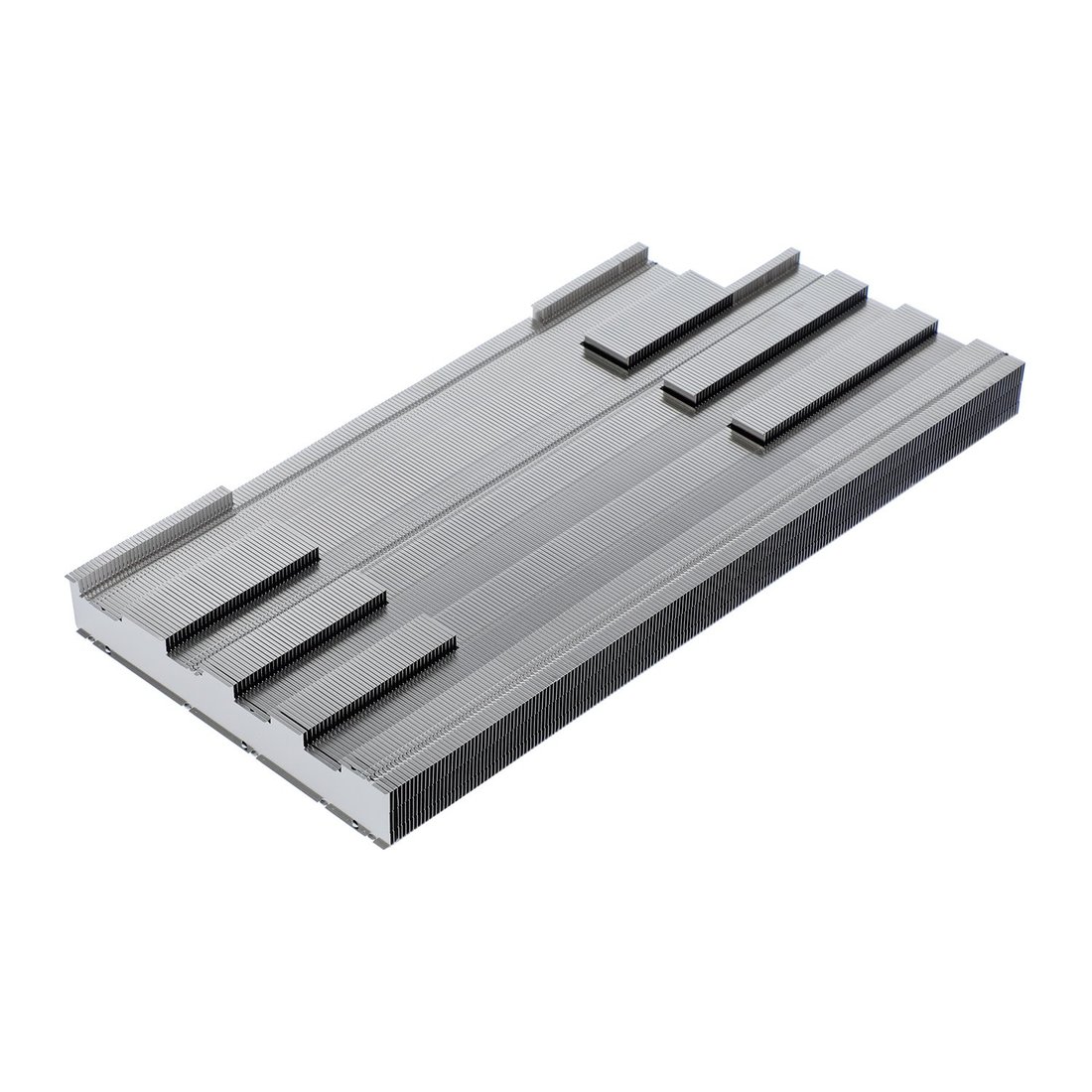The Rise of Stamped Heat Sinks: Revolutionizing Thermal Management
Stamped heat sinks have become increasingly popular in recent years due to their excellent thermal conductivity and cost-effectiveness. These versatile components play a crucial role in dissipating heat efficiently, ensuring the optimal performance and longevity of electronic devices. In this article, we will explore the widespread use of stamped heat sinks and shed light on their numerous benefits in various industries.
1. Understanding Stamped Heat Sinks: What Are They?
Stamped heat sinks are heat-dissipating devices made from a flat metal sheet that is stamped into a specific shape. The process involves using a customized die to create intricate fin patterns, allowing for maximum heat dissipation. These heat sinks can be made from various materials such as aluminum, copper, or even steel, depending on the specific application requirements.
2. Superior Heat Dissipation: The Key to Efficient Thermal Management
The primary purpose of a heat sink is to dissipate heat generated by electronic components, preventing them from overheating and malfunctioning. Stamped heat sinks excel in this role due to their large surface area, which allows for enhanced heat transfer. The stamped fin patterns significantly increase the surface area available for heat dissipation, leading to improved thermal management.
3. Versatility Across Industries: Where Are Stamped Heat Sinks Used?
The widespread use of stamped heat sinks can be observed across a wide range of industries. These include:
- Consumer Electronics: Stamped heat sinks are commonly found in smartphones, tablets, laptops, gaming consoles, and other portable electronic devices, where space and weight constraints make them an ideal choice.
- Automotive: With the increasing complexity of modern vehicles, stamped heat sinks are used to cool electronic control units (ECUs), power modules, LED headlights, and other components.
- Telecommunications: Stamped heat sinks play a crucial role in cooling telecom infrastructure, such as base stations, routers, and servers, ensuring uninterrupted connectivity.
- Industrial Applications: From power electronics to LED lighting, stamped heat sinks find applications in various industrial sectors, providing reliable thermal management solutions.
4. Cost-Effectiveness: Making Thermal Management Affordable
Stamped heat sinks offer a cost-effective solution for thermal management. The manufacturing process involves stamping, which is highly efficient and allows for mass production, reducing overall production costs. Additionally, the use of lightweight materials, such as aluminum, further contributes to cost savings without compromising performance.
5. Design Flexibility: Customized Solutions for Diverse Needs
One of the significant advantages of stamped heat sinks is their design flexibility. The stamping process enables the creation of intricate fin patterns, offering customized solutions tailored to specific thermal requirements. Engineers can optimize the fin density, shape, and height to achieve the desired heat dissipation performance, making stamped heat sinks a versatile choice for diverse applications.
6. Ease of Installation: Streamlining the Assembly Process
Stamped heat sinks are designed with ease of installation in mind. They often feature pre-drilled holes or adhesive backing, allowing for straightforward integration into electronic devices or heat-generating components. This ease of installation not only saves time during assembly but also ensures a reliable and secure attachment, preventing any potential damage due to thermal expansion or vibration.
7. Enhanced Reliability and Longevity: Protecting Electronic Components
Heat can significantly impact the reliability and lifespan of electronic components. By effectively dissipating heat, stamped heat sinks help maintain optimal operating temperatures, reducing the risk of component failures. The increased reliability and longevity of electronic devices translate into improved customer satisfaction and lower maintenance costs.
8. Environmental Considerations: Energy Efficiency and Sustainability
In today's era of increasing environmental awareness, energy efficiency and sustainability are critical factors. Stamped heat sinks contribute to energy efficiency by preventing overheating, which can lead to energy wastage. Furthermore, the use of recyclable materials in their construction, such as aluminum, supports sustainability efforts by reducing waste and promoting the circular economy.
9. Advancements in Stamped Heat Sink Technology: Pushing the Boundaries
The field of stamped heat sinks is continuously evolving, driven by advancements in manufacturing processes and material science. Innovations, such as additive manufacturing and new alloys, are further improving the thermal performance and design possibilities of stamped heat sinks. These advancements pave the way for even more efficient thermal management in various industries.
10. Conclusion: Unleashing the Full Potential of Stamped Heat Sinks
Stamped heat sinks have emerged as a game-changer in the field of thermal management. Their widespread use across industries, cost-effectiveness, design flexibility, and superior heat dissipation capabilities make them indispensable components in electronic devices. As technology continues to advance, stamped heat sinks will play a vital role in ensuring the reliable and efficient operation of electronic systems, driving innovation and enhancing user experiences.

